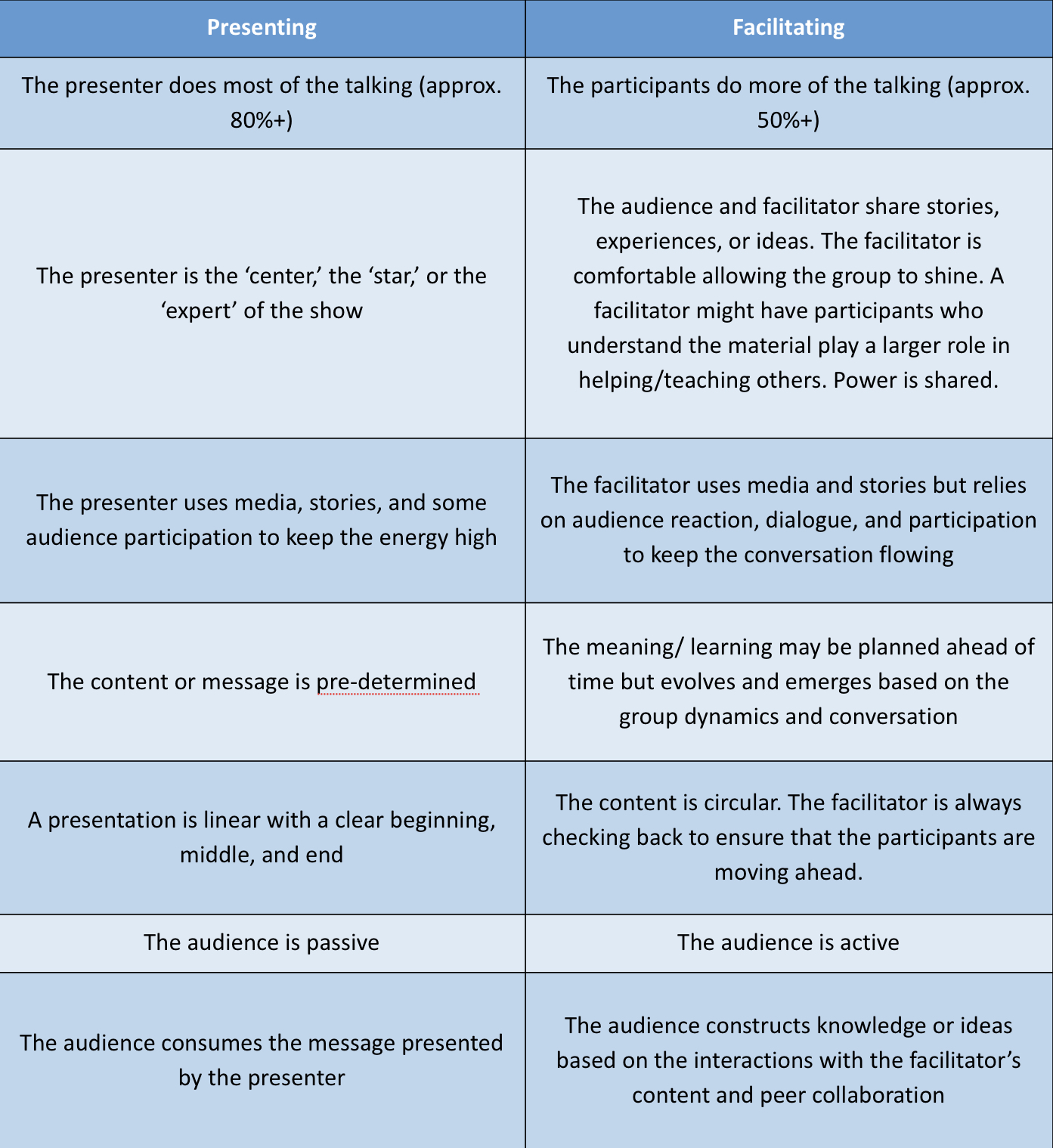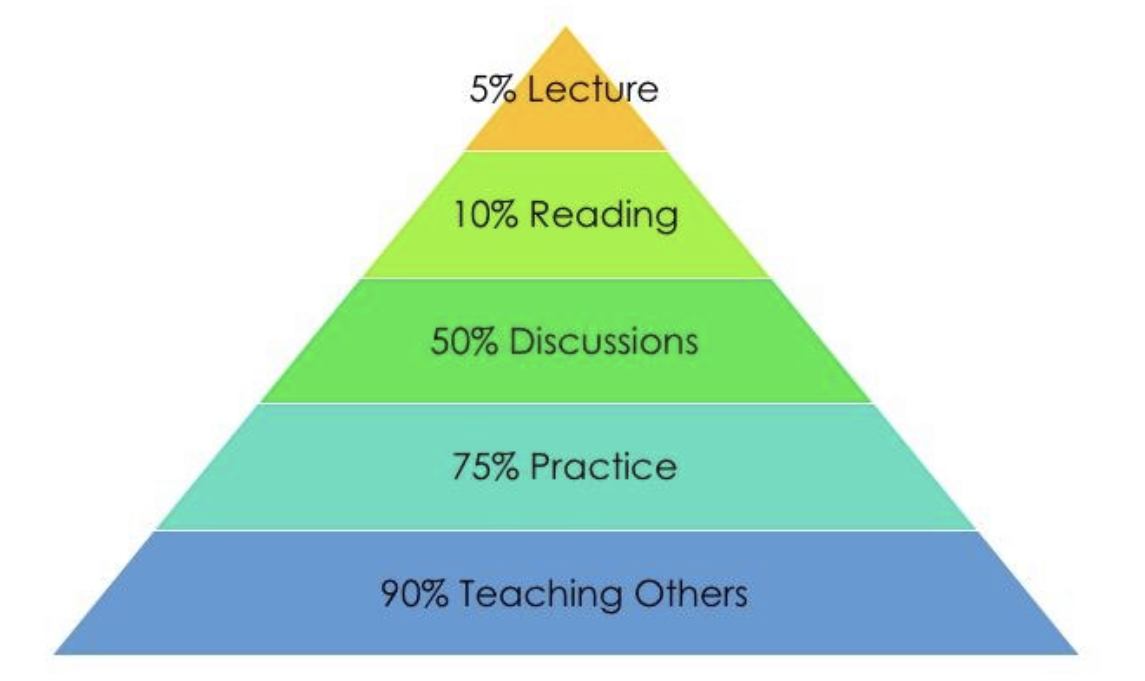Module 2: Facilitating vs. Presenting
For many people, when they hear the word “facilitating,” they picture a classroom led by an instructor or a presentation they have attended. They may erroneously think that facilitating and presenting are the same thing, but the two are markedly different.
Introduction
Analogy
A good analogy for understanding the difference is that a presenter is a “sage at the stage” while a facilitator is a “guide by the side.” Each has their merits, but there are big problems when facilitators use presentation skills alone.
Engagement Level
To increase the engagement level in your own group sessions, you need to move from a presenter or lecture-based model of interaction to a participatory, facilitation model.
Education expert Edgar Dale put forward the idea of a “cone of learning” or “learning pyramid” to show how people are most likely to learn. The idea states that people learn:
5% by lecture
10% by reading
50% by discussions
75% by practice
90% by teaching others
This model makes it clear:
It’s in your best interest to use a facilitative style for the best retention possible. Your audience will be more likely to remember what you’ve taught them.
There are also clear generational trends. Older audiences may be more comfortable and successful with passive learning styles, but younger audiences increasingly expect to be actively involved.
In addition to better retention on the part of your audience, other major benefits of facilitation include:
- Competitive advantage. Using strong facilitation skills can set you apart from your competitors since you’ll see better results from any live group sessions.
- Better relationships. By improving your facilitation skills, you can connect better with your audience. The result is an improvement of the quality of your relationships and interactions, leading to more business.
- Learning experiences. Effective facilitation leads to a more engaged audience, which affords more learning opportunities. You don’t have to focus so much on being an expert. Instead, you can learn and gain insights from your audience while they each internalize the concepts you’re teaching in their own way.
- Multi-way communication. Facilitation is the shift from one-way to multi-way communication. You will bring your audience into the conversation.
By the time you complete this course, you will be able to:
- Deliver engaging in-person workshops that keep your audience interested, involved, and focused on actionable learning
- Facilitate valuable webinars that encourage a high level of participation from your audience
- Lead thought-provoking calls, audio conferences, and meetings
- Create a plan to ensure you incorporate effective facilitation skills in your business.
Learning Activity:
- From the presentations vs. facilitation comparison section, identify a few strategies that are most appealing to you. What are some skills that you’d like to hone during this course?
- Think of some really great facilitated sessions you’ve participated in (webinars, training sessions, in person or virtual meetings). What characteristics set them aside from other sessions you’ve participated in? What are some methods those facilitators used that really impressed you?
Todd McCall
Instructor
I help practices who are marketing professional services get the attention they deserve by developing an online presence that converts visitors into clients.
Pricing Information
Ready to move forward? We have pricing options that range from full access membership to a la carte courses.
Membership Information
Membership in Coffee Break University has its benefits. Learn more about what our Power Practice Network has to offer.


